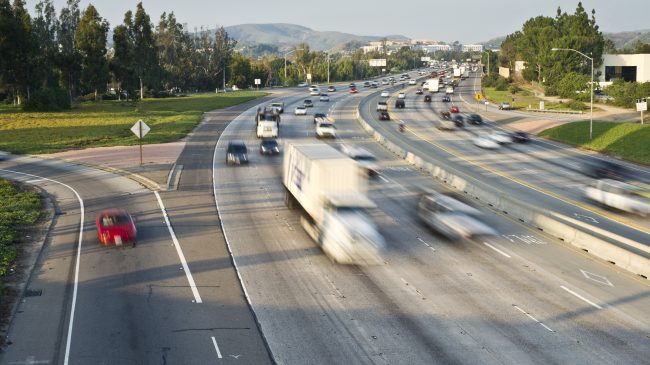Long-term infrastructure planning is a difficult task. When you throw in the current political chaos at the federal level, disruptive changes occurring in transportation-related industries caused by innovative companies like Uber and Lyft, and an uncertain technological future as companies race to develop electric vehicles and self-driving cars, and the undertaking becomes even harder. Under these conditions, the Orange County Transportation Authority (OCTA) has done a solid job of developing its $43 billion long-range transportation plan.
The plan, “Designing Tomorrow,” passed late last year, is supposed to guide the region’s transportation policy for the next 20 years. In it, OCTA wisely acknowledges some of the challenges it faces, including declining transit ridership, an increase in vehicle miles traveled by automobiles, and a complex state environmental review process. The plan also recognizes shifting commuting patterns and the current imbalance between where people live and where they work.
The plan forecasts a 66 percent increase in traffic congestion by 2040, due in part to a 10 percent increase in the region’s population, a 17 percent increase in jobs in the county, and a 12 percent increase in daily car trips. Without additional improvements to the road system, drivers would spend 41 percent more time sitting in traffic and travel speeds would decline by 6 percent. To counter that, the plan prioritizes needed highway improvements, including adding general travel lanes to I-5, SR 55, SR 57, SR 91 and I-405. It adds toll lanes on SR 73, SR 133, SR 241, and SR 261, and improves several deficient interchanges, including I-605 at Katella Avenue and SR 57 at Lambert Road.
The long-range plan also includes many small, yet cost-effective improvements. It adds surface streets throughout the county and calls for intelligent transportation system upgrades to improve traffic light synchronization and help emergency vehicles. Even minor operations improvements, such as traffic light re-timing, can deliver big bangs for the buck — costing less than $3,000 per intersection while reducing traffic delays by up to 40 percent.
The agency’s primary metrics for success (travel time delays, morning freeway, and arterial road speeds) wisely reflect the fact that 92 percent of Orange County commuters travel on roadways via cars, buses, and rideshare vehicles.
The plan offers high-quality, cost-effective transit enhancements as well. A bus efficiency strategy aims to increase local bus speeds and improve schedule adherence. And the plan funds two freeway bus rapid transit lines and nine other “high-quality” transit lines to connect Santa Ana with key destinations like the Brea Mall and link the Anaheim Transit Center with the South Coast Park and Ride location, among others.
Like most plans of this size and scope, however, a few major negatives standout. OCTA notes that since travel speeds in two-person carpool lanes have slowed and don’t meet federal requirements, it plans to convert those high-occupancy vehicle (HOV) lanes to three-person carpool lanes and allow solo-commuters to pay tolls to use the lanes. But, instead of learning this lesson and tolling other lanes, over the next 20 years OCTA is adding more than a 100 miles of two-person carpool lanes that will be expected to fill up with traffic. Instead, the agency should’ve focused on building express toll lanes designed for buses, vanpools, and drivers willing to pay tolls. Building express toll lanes from the start would be less expensive and politically painful than adding carpool lanes but then changing the rules to use them once they become gridlocked.
The worst project in the plan is the streetcar running from Santa Ana to Garden Gove. Streetcars are expensive, slow projects that don’t carry large numbers of passengers, improve regional mobility, or improve commutes. In cities that have them, it often takes about the same amount of time to walk between two destinations as it does to take a streetcar.
While some of the plan’s mistakes will prove costly to taxpayers and regional mobility, overall OCTA has done far better than many of its Southern California neighbors in developing a long-range plan that actually addresses many of its key infrastructure issues.
This column first appeared in the Orange County Register.

